Canon 20D: Raising the Bar for Prosumer Digital SLRs
by Stephen Caston on November 11, 2004 12:05 AM EST- Posted in
- Digital Camera
General Image Quality
For these pictures, both the 20D and 10D were reset to their factory default setting. A Canon 50mm Macro lens was used for each camera. The 20D was set to Parameter 2 while the 10D was set to Standard. Both cameras were set to record in in JPEG mode (Large/Fine). The pictures were then taken using modes in the "Creative Zone" with Auto WB. The shooting information can be seen directly under each thumbnail. Click on a thumbnail to view the full-size image. The crops below the thumbnails are 100%.  50mm ISO 200, 1/500, f/9.0 Click to enlarge. |
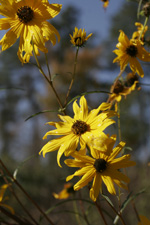 50mm ISO 100, 1/640 f/5.6 Click to enlarge. |
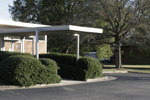 50mm ISO 400, 1/400, f/7.1 Click to enlarge. |
 |
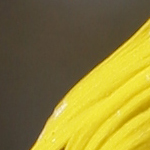 |
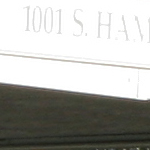 |
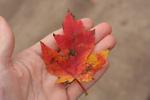 50mm ISO 3200, 1/200, f/6.3 Click to enlarge. |
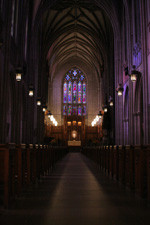 28-135mm (I.S. enabled) ISO 3200, 1/100, f/3.5 Click to enlarge. |
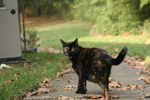 28-135mm ISO 800, 1/500, f/5.6 Click to enlarge. |
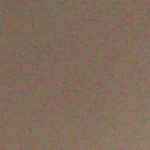 |
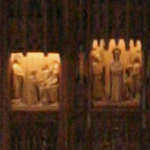 |
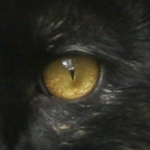 |
The first two samples show that the 20D is capable of producing sharp, well-exposed, and low-noise images. In the third sample, we were looking to see how the 20D could handle an image with some very dynamic lighting. Although the dynamic range is pretty good, it does not appear to be noticeably different than that of the 10D. The fourth and fifth images clearly show the 20D's amazing low-noise capabilities at ISO 3200. Both images were handheld - something that would be hard to do (particularly the chapel shot) on the 10D at ISO 800 or 1600. As for other aspects of image quality, the 20D is very similar to the 10D. Both cameras use a low default sharpening and saturation setting. Most people shooting in JPEG mode will probably want to boost the sharpening level as both cameras are very conservative with the default setting.
ISO 3200 Comparison
Below, we have compared the 20D to the 10D in their abilities to shoot indoor high ISO images.| 20D | 10D |
 28-135mm ISO 3200, 1/180, f/5.6 Click to enlarge. |
 28-135mm ISO 3200, 1/100, f/5.6 Click to enlarge. |
 |
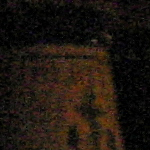 |
As this handheld shot comparison clearly shows, the 20D is able to produce impressively low noise images at its highest ISO setting. The 10D image, on the other hand, suffers from a massive loss of detail. This comparison is important because it shows that the 20D provides the freedom to shoot low light subjects without a tripod and still achieve usable results.
Long Exposure Comparison
For our long exposure comparison shot, we set both the 20D and 10D to ISO 100, Auto WB, and Large/Fine JPEG mode. The picture was taken from the same tripod with mirror lockup enabled. For the 20D, we took a picture with and without NR (Noise Reduction).| 20D | 20D (NR) | 10D |
 Click to enlarge. |
 Click to enlarge. |
 Click to enlarge. |
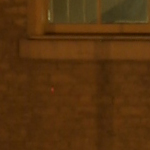 |
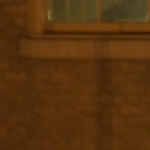 |
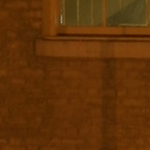 |
Interestingly, the 10D image comes out a bit sharper in this comparison even though it has several stuck pixels throughout the image. In the 20D image without NR, there is one red stuck pixel (as shown in the crop). However, when NR is enabled via the Custom Functions, the stuck pixel does not appear.










14 Comments
View All Comments
shuttleboi - Monday, November 15, 2004 - link
What exactly is the point of these camera reviews? As I wrote several months ago, Anandtech is a gadget/hardware site, not a photography site. If you want to reach the photography community (like the rich folk who hang around DPReview.com, spending $1000 a month on lenses, and are ready to click on lots of advertisers' banners), you should do something novel. I suggested reviewing portable photo storage devices (e.g. the Epson P-2000, Archos AV-480, and Nikon ), but nobody listened to me. Suit yourself. As soon as you review any of these gadgets, you will find yourself on DPReview.com, gizmodo.com, and other popular sites. But don't listen to me, I'm just a yuppie male, age 28-40, making a good salary; it's not like your advertisers care about my demographic or anything.Joony - Friday, November 12, 2004 - link
I love my 20D, check out my photogallery,http://www.pbase.com/joony
Gatak - Thursday, November 11, 2004 - link
You may also want to look at the DCRAW - Digital Camera RAW. It is a open source program for reading RAW files from most camera RAW files.DCRAW vs. Canon D60: http://www.aim-dtp.net/aim/digicam/dcraw/
DCRAW vs. Canon 10D: http://www.insflug.org/raw/analysis/dcrawvsfvu/
DCRAW source: http://www.cybercom.net/~dcoffin/dcraw/
Windows binary: http://home.arcor.de/benjamin_lebsanft/
stephencaston - Thursday, November 11, 2004 - link
Woodaddy, thanks for your comments. A Canon 50mm f/2.5 Macro lens was used for all the tests except on page 11 (where each picture lists the lens used beneath the thumbnail). I've also amended the other image quality pages to indicate the use of the 50mm. Sorry for this oversight.WooDaddy - Thursday, November 11, 2004 - link
I missed something critical here. Let me know if it was posted. What lens are you using? Since DSLRs have interchangable lenses, the image quality is directly related to the lens used. If not listed, you really want to say that for reference in you image quality tests.#8, #3 I've picked on Stephen when he first got started on his reviews. He's getting better and IMO he's doing a great job. Now mind you, dpreview is for photogs/techies with an emphasis on photogs. AT is the converse; techies/photogs. I would consider ease of use and image quality and control to be a focus in a review at dpreview. Technical features would be the focus at AT....
Personally, I'm a photog more so than a techie camera guy. I'm doing quite well with my Nikon FE2 manual camera (with Acer 2740s film scanner) and Minolta G400 backup.
AtaStrumf - Thursday, November 11, 2004 - link
Wau, this thing makes some great pics! Way too expensive though.Gatak - Thursday, November 11, 2004 - link
#3 Yes dpreview has many good articles. But I think this is a good start anyway. Dpreview is very technical and doesn't really provide much explanation of technical stuff. This is something I think Anandtech could advance in =) It is possible to have technical depth and yet have good, easy to understand explanations.ProviaFan - Thursday, November 11, 2004 - link
#4 - that's why we have the term "prosumer". It's (the 20D) better than consumer, which would be the digital rebel, but it's not in the league of 1D Mark II (even though it has the same resolution, the speed and build quality don't compare) or 1Ds - which are professional.stephencaston - Thursday, November 11, 2004 - link
#4, The 20D is often referred to as a Prosumer camera. Among the reasons are price, 1.6x cropping factor, sealing, built-in flash, and _optional_ battery grip.The 20D is aimed at amateur photographers looking to replace/supplement their existing film SLR or for those looking to upgrade from a non-SLR camera. I've also heard of pros buying 10D and 20D bodies as backup cameras. I don't think it would be fair to the 1D line to call the 20D a professional camera. It is very nice, but not quite pro ;-)
sjprg - Thursday, November 11, 2004 - link
Nice article, I use both a 10D and a 20D and would like to see some ACR tests added to the CPU processing tests besides the emphasis on games to assist us in selecting the best hardware for processing digital images. One of the test that could be used is the Tom Fors ACR calibrator beta 3.http://fors.net/scripts/ACR-Calibrator/